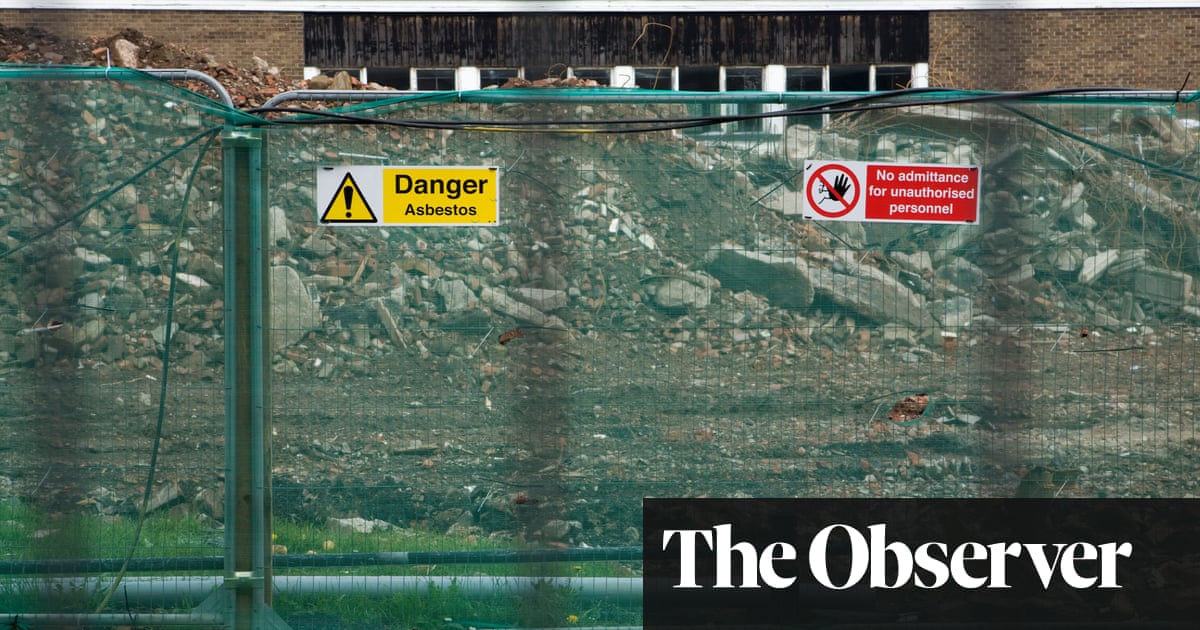
The threat of asbestos-related cancer to female teachers is to be examined after possible signs of an elevated risk of fatal illness.
Trade unions are to work with one of the country’s leading cancer experts on a study of the exposure women in their late-40s to mid-60s may have had to the material inside school buildings. It comes after researchers detected a possible increase in mesothelioma deaths among the group that could be statistically significant.
Official data has already shown that female former teachers born from 1935 to 1954, working when asbestos was still being installed in schools, have a 40% increased rate of mesothelioma, a cancer related to asbestos exposure that affects the lining of lungs. The Health and Safety Executive (HSE) reported more than 5,000 asbestos-related deaths in 2019 across the population as a whole, including from cancers like mesothelioma.
Statisticians have now detected a rate of mesothelioma deaths that “borders on statistical significance” among teachers born between 1955 and 1974. Unions are planning to work with Professor Julian Peto, who has studied the issue for many years. The proposed study will identify teachers who have had lung operations so that any samples taken from them can be studied to detect levels of asbestos exposure.
“Most teachers born since 1955 began work after the 1970s – when asbestos was no longer being installed in schools – so their exposures were from the asbestos already installed, much of which is still there,” Peto said. “The question is what the continuing risk is, and what should be done to reduce it.
“The updated data for 2011-2020 now shows an excess in female teachers born 1955-74 (19 mesothelioma deaths, versus 12.3 expected), which borders on statistical significance, although the numbers are still too small to give a reliable estimate of the continuing risk. We would like to study this important question. The lifetime mesothelioma risk can be predicted from these asbestos levels in lungs.”
Asbestos was banned in 1999 but was used extensively in England from the 1950s to the mid-1980s, meaning that many schools contain some of the material. A government survey in 2019 found that 80.9% of participating schools said asbestos was present on their estate. Most were found to have a plan for managing it.
Unions and campaigners have been pushing for swift asbestos removal. Earlier this year, a Commons select committee called for total removal from public and commercial buildings within 40 years. However, the government said it was sticking to the policy of keeping asbestos in place where it can be managed safely, stating that removal may risk increasing exposure.
Kevin Courtney, joint general secretary of the National Education Union, said: “This research is vitally important. We believe it will establish once and for all the risk asbestos in school buildings poses to the health of teachers, support staff and children. We hope the results will convince the government of the urgent need for an independent review of current policy, which is to manage rather than remove asbestos.”
Shelly Asquith, health, safety and wellbeing policy officer at the TUC, said: “It’s only in recent years that we’ve started to see how much of a problem it is among teachers and former teachers. It’s good to get recognition, and hopefully some scientific evidence, to back up the work we’ve been doing for a few years on this. We want asbestos removed.”
An HSE spokesperson said: “We understand the concern about asbestos in school buildings. Risk of exposure is low as long as schools follow the regulations and have the right measures in place. We provide clear guidance to those who manage buildings that contain asbestos, and our current inspection campaign is checking that schools have the right steps in place and are following the law.”












